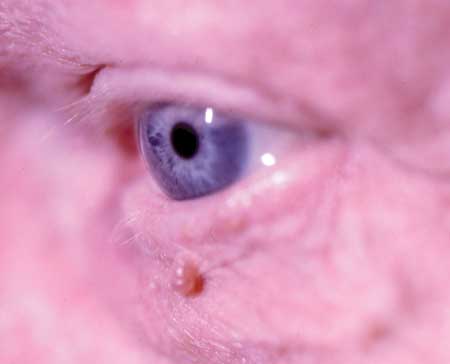What explains this tender, pruritic patchy rash?

Case 1: A 65-year-old woman seeks evaluation of a tender, pruritic patchy rash on the trunk and extremities, as well as tender lips. Her symptoms began after she started taking a new NSAID for osteoarthritis. She has no known drug allergies and has not changed any other medications. The photographs were taken 2 days apart.
Which of the following best explains the patient's symptoms?
A. Erythema multiforme reaction to the NSAID.
B. Outbreak of herpes simplex triggered by a drug reaction.
C. Candidal cheilitis incidental to a drug reaction.
D. Contact dermatitis to toothpaste.

Answer:
Case 1: This patient had an erythema multiforme reaction to the NSAID, A, with mucosal involvement, primarily of the lips, which was confirmed by biopsy.
A course of systemic corticosteroids was begun, and the patient's symptoms began to resolve after 3 days. A number of drugs have been implicated in erythema multiforme reactions; the most severe form of this type of reaction is Stevens-Johnson syndrome.
The lesions of herpes simplex are discrete vesicles. Candidal infections are more likely following irritation of the skin. In this case, there was no history of irritation before the symptoms erupted. Contact dermatitis does not typically produce an erosive dermatitis.

Case 2: For several months, a 55-year-old man has noticed a slowly enlarging, asymptomatic growth on his eyelid. He has a history of significant sun exposure but not of skin cancer.
What does this look like to you?
A. Wart.
B. Skin tag (cutaneous papilloma).
C. Basal cell carcinoma.
D. Dermatosis papulosa nigra.
E. Intradermal nevus.
Bonus question: Is there an association between this lesion and colorectal polyps?
Answer:
Case 2: This is a skin tag, B, a benign growth that occurs on flexural surfaces such as eyelids.
Warts have a more verrucous appearance. Basal cell carcinoma features a more pearly surface and telangiectasia. Dermatosis papulosa nigra refers to the smooth, dome-shaped black papules that erupt on the face of young and middle-aged blacks. Intradermal nevi are flat or dome-shaped flesh-colored indurated papules.
Answer to bonus question: There is no association between skin tags and colorectal polyps.1

Case 3: A 41-year-old woman was concerned about an asymptomatic, rough-textured growth on her upper eyelid. She has a history of sun exposure but not of skin cancer.
Can you identify this lesion?
A. Seborrheic keratosis.
B. Basal cell carcinoma.
C. Wart.
D. Intradermal nevus.
E. Skin tag (cutaneous papilloma).
Answer:
Case 3: This is a nonpigmented variant of seborrheic keratosis, A. These benign lesions can erupt almost anywhere except the palms and soles.
Basal cell carcinoma, which typically appears on sun-exposed surfaces, is uncommon on ther upper eyelids. Warts can be confused with seborrheic keratoses, because the surface texture is similar. However, unlike warts, seborrheic keratoses generally feature keratin plugs. Intradermal nevi have a smoother surface than seborrheic keratoses, and skin tags are more elongated or pedunculated.

Case 4:
For several months, a 68-year-old woman has had dry, pruritic hands. She applies moisturizers twice a day, to no avail. There is no history of seasonal allergies or asthma. Her primary care physician prescribed triamcinolone( cream; however, it has not been effective.
What do you suspect?
A. Asteatotic eczema from excessive hand washing.
B. Contact dermatitis.
C. Dermatophyte infection.
D. Candidal infection.
E. Psoriasis.
Bonus question: Which single question would provide a key to the diagnosis?
Answer:
Case 4: This patient had asteatotic eczema from excessive hand washing, A. This behavior, a feature of obsessive-compulsive disorder, negated the attempts at moisturizing and the effects of topical corticosteroids. The patient's condition improved dramatically with the help of psychotherapy.
Patch testing is sometimes required to exclude contact dermatitis. A potassium hydroxide( evaluation can help rule out dermatophyte and candidal infections. Psoriasis features discrete borders and nail pitting.
Answer to bonus question: "How often do you wash your hands?" (This patient washed her hands more than 100 times a day.)
1. Brendler SJ, Watson RD, Katon RM, et al. Skin tags are not a risk factor for colorectal polyps. J Clin Gastroenterol. 1989;11:299-302.


